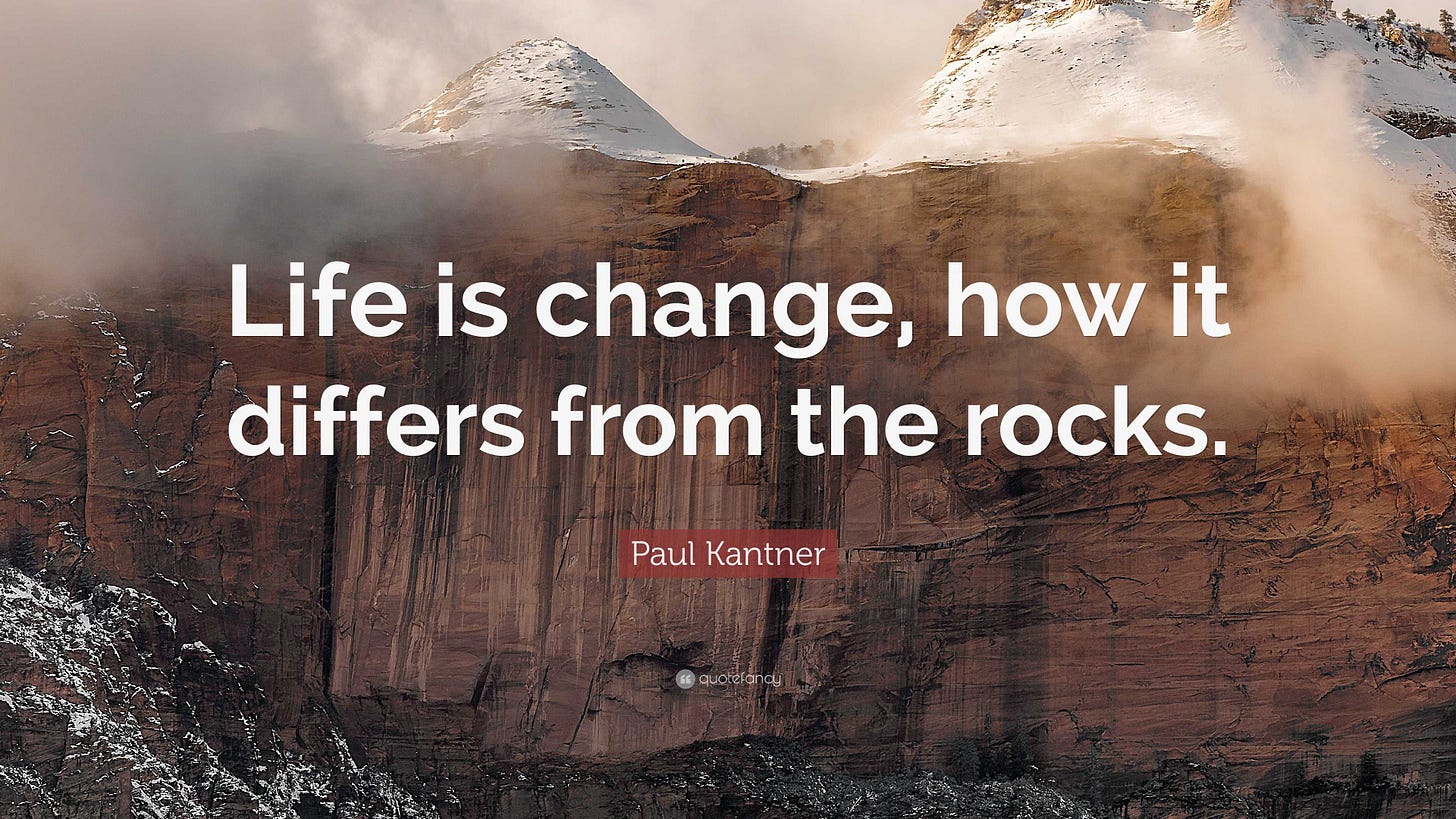All Along the Watchtower: Trump’s Impact on Academia
Reform or Ruin?
This is a guest post by Nathanial Bork, who is working on his second Ph.D. in Education Reform as Distinguished Fellow at the University of Arkansas. His first doctorate was in Political Science from Colorado State where he specialized in Political Theory. His upcoming book Climate of Mistrust: How Higher Education Polarization Leads to Skepticism about Climate Change (and Everything Else) explores the social pathologies plaguing our universities and what can be done to heal them, and is due out later this year. He spends his summers and holidays in Colorado with his daughter and his free time going on motorcycle adventures throughout the Ozarks.
Nate has his own excellent Substack, What the Other Side is Saying.
By Nathanial Bork
American higher education faces an existential crisis. Administrative bloat, ideological conformity, and declining public trust have left universities vulnerable, a predicament exacerbated by academia’s leftward shift, as Michael Clune, Lee Jussim, and many others have warned. President Trump’s second term, guided by Project 2025 and amplified by J.D. Vance’s rhetoric, has launched a multifaceted assault on academia targeting Diversity, Equity, and Inclusion (DEI), critical race theory (CRT), federal funding, and academic freedom. These reforms promise to address real pathologies but risk dismantling the academy’s intellectual and operational foundations. This article evaluates Trump’s policies through seven key arguments for their necessity, seven risks they pose, and seven strategies to navigate the fallout, grounding the analysis in data and first principles.
Part 1: Why Trump’s Reforms Are Necessary
Come gather 'round people, Wherever you roam
And admit that the waters around you have grown
And accept it that soon you'll be drenched to the bone
If your time to you is worth savin'
And you better start swimmin' or you'll sink like a stone
For the times they are a-changin'
Academia’s self-inflicted wounds (bloat, bias, and censorship) have eroded its legitimacy, inviting Trump’s reforms. Below, I give seven arguments to explain why these measures may be essential to restore higher education’s mission:
Curbing Administrative Bloat: Administrative costs consume approximately 30% of university budgets, doubling instructional spending growth since 1990. Tuition has surged 125%, burdening students with ~$38,375 in average debt. Trump’s 15% cost caps aim to redirect funds to teaching and research, addressing a key driver of public distrust.
Restoring Public Trust:Only 36% of Americans have a lot of confidence in higher education, down from 57% in 2015, with just 19% of Republicans expressing high confidence. J.D. Vance’s claim that “universities are the enemy” resonates with a public alienated by costs and perceived indoctrination. Reforms like accreditation restructuring seek to realign institutions with societal values.
Countering Ideological Bias: NIH grants increasingly favor DEI-aligned proposals over rigorous ones. Executive Order 13950, reinstated in 2025, bans DEI training, while Alabama’s SB 129 shutters DEI offices.
Protecting Free Speech: 42% of faculty self-censor, and Jussim’s 2018 ostracism highlights dissent’s cost. Department of Education guidelines and Florida’s SB 266 penalizes speech suppression, addressing academia’s failure to protect inquiry, which many of us have argued invited backlash.
Addressing Replication Failures: More than 50% of researchers believe that there is a replication crisis, undermining credibility. Trump’s grant reallocations prioritize rigorous science, responding to taxpayer skepticism about flawed research, amplified by public distrust.
Challenging CRT and Dogma: 862 anti-CRT measures across 49 states by 2024 reflect rejection of perceived indoctrination. Laws like Idaho’s HB 440 curb CRT and “divisive concepts,” refocusing education on evidence.
Reforming Accreditation: Project 2025’s plan to replace “radical Left” accreditors with “patriotic” ones enforces accountability. This addresses concerns that accreditors enable conformity, aligning with public demands for transparency.
Part 2: Why Trump’s Reforms are Horrendous
I saw ten thousand talkers whose tongues were all broken
I saw guns and sharp swords in the hands of young children
And it’s a hard, it’s a hard, it’s a hard, it’s a hard
It’s a hard rain’s a-gonna fall
Trump’s reforms, while targeting real issues, risk destructive overreach. Below, I offer seven arguments highlight their potential to undermine academia’s diversity, research, and academic freedom:
Eroding Diversity in STEM: DEI programs have not significantly increased Black and Hispanic Ph.D. enrollment, with ongoing challenges in diversifying medical and academic fields. Alabama’s SB 129 cuts scholarships, shrinking talent pipelines. Diverse teams drive innovation, and dismantling DEI risks sterile labs.
Disrupting Research Funding: DOGE’s grant freezes threaten jobs, causing hiring freezes and stalling critical research. The proposed elimination of $40 billion dollars for Health and Human Services will cripple labs, risking a brain drain as researchers move onto more stable employment.
Imposing New Censorship: Visa restrictions target 30% of STEM faculty for speech, and 113 gag orders restrict “divisive concepts.” These mirror leftwing censorship, enforcing rightwing dogma.
Eliminating DEI Jobs: 43,000 DEI positions face cuts under Trump’s January 2025 order. Alabama’s SB 129 triggers staff reductions, straining support for diverse students, exacerbating faculty fears.
Threatening Financial Stability: Ending student loan forgiveness and Pell Grants risks a $2.7 billion shortfall. Mass deportations could depress enrollment, straining budgets, while endowment taxes threaten cuts.
Undermining Judicial Precedents: The Supreme Court’s 2023 affirmative action ban and Speech First v. Cartwright emboldened anti-DEI litigation, chilling progressive curricula.
Promoting Partisan Curricula: Project 2025’s “patriotic education,” rooted in the 1776 Commission, swaps progressive dogma for nationalist narratives. This risks turning academia into propaganda, undermining integrity
Part 3: A Path Forward
Well, the deputy walks on hard nails and the preacher rides a mount
But nothing really matters much, it's doom alone that counts
And the one-eyed undertaker, he blows a futile horn
Come in, she said, I'll give ya shelter from the storm
Academia’s failures provoked Trump’s reforms, but their overreach risks ruin. Based on my upcoming book A Climate of Mistrust, I would like to offer 7 policy changes faculty and administrators should enact to restore trust through inclusivity, deliberation, and psychological nuance to rebuild legitimacy and foster cooperation with conservatives.
Faculty and Administrators Should Host Deliberative Forums: Convene monthly mini-publics with 50 students and 20 faculty to debate contentious topics like DEI, using open dialogue. Ensure ideological balance, use anonymized Canvas inputs, and share outcomes on social media to engage a skeptical public.
Faculty and Administrators Should Enforce Viewpoint-Neutral Speech Policies: Replace vague codes with the Chicago Statement and train via Inversity’s unity framework. Publicize policies and collect Canvas feedback. Open discourse protects faculty from sanctions and rebuilds credibility cheaply (FIRE, 2021; Rauch, 2021. Adopt system-wide, boosting conservative trust from its current 19% level of support (Gallup, 2023).
Faculty and Administrators Should Recruit Politically Diverse Faculty: Target 20% conservative/heterodox faculty by 2030 through diverse recruitment, X postings, and mentorship. Track via transparent reports. Ideologically diverse hires enhance scrutiny and deter interventions at low cost, and improve the scientific outputs by noticing partisan blindspots (Duarte et al., 2015).
Faculty Should Revise Curricula for Moral Pluralism: Integrate Haidt’s six moral foundations into general education, using inquiry models for discussions (Care/Harm, Fairness/Cheating, Loyalty/Betrayal, Authority/Subversion, Sanctity/Degradation, and later Liberty/Oppression was added as sixth category). With almost all of higher education being left of center, there is a tendency to assume the liberal or progressive worldview as entirely natural, but liberals and conservatives not only have different moral foundations (liberals prioritize Care/Harm and Fairness/Cheating above the other values compared to conservatives), they have different somatic experiences when viewing moral violations.
Administrators Should Partner with Conservative Leaders: Collaborate with Gad Saad or Turning Point USA on AGW town halls and X op-eds, funded by outreach budgets. Evaluate via X sentiment and trust surveys. Credible partners amplify research and counter bias narratives at moderate cost
Faculty Should Adopt Transparent Research Practices: Mandate open data and preregistration for empirical research, with public repositories promoted on X. Train via workshops. Transparency counters skepticism at low cost, enhancing credibility.
Administrators Should Reform Administration Inclusively: Cut 20% administrative costs and revise DEI for viewpoint diversity, publicizing on X (Arnold, 2021). Redirect savings to faculty and scholarships. Inclusive reforms restore autonomy cheaply.
Conclusion
Trump’s reforms confront academia’s failures (bloat, bias, and distrust) but risk replacing one dogma with another. Administrative cuts and speech protections could restore legitimacy, but DEI bans, grant freezes, and gag orders threaten diversity, research, and freedom. Academia must own its role in provoking this crisis, while resisting partisan overreach. By cutting waste, reforming DEI, and safeguarding speech, universities can rebuild the public support they’ve lost.
The times they are a’ changin’; academia must adapt or collapse.
Commenting
Before commenting, please review my commenting guidelines. They will prevent your comments from being deleted. Here are the core ideas:
Don’t attack or insult the author or other commenters.
Stay relevant to the post.
Keep it short.
Do not dominate a comment thread.
Do not mindread, its a loser’s game.
Don’t tell me how to run Unsafe Science or what to post. (Guest essays are welcome and inquiries about doing one should be submitted by email).
Related Posts
Trump, Science, and Academia
In this post, I provide a preliminary evaluation of Trump administration actions as they relate to science and academia. But first, allow me to do some throat-clearing…
Academics Are Terrible at Politics
I would like to see a thriving academia. This essay will not create a thriving academia, but I do hope it provides some ways to improve its failing health.















My 2c:
(1) Academia needs to reform itself or be reformed, because problems. Definitely. In many ways, academia has invited Trump's attacks.
However,
(2) those attacks are unrelated to the problems, not conducive to the reforms that are needed to fix the problems, nor is it their goal. They (the attacks) are simply punitive and destructive.
(3) Attempts to specifically target diversity in recruitment or admissions are destructive independently of the axis along which the diversity is or defined sought- sex, identity, race, religion, political affiliation, personal beliefs, views, etc. - and should be avoided.
IMHO, academia needs to get out of politics altogether and attract the best brains/educators/innovators there are out there while severely punishing any attempt to institutionalize activism and political activity. Of course, individuals can pursue their political beliefs, but they can't bring it to class/lab/workplace. Institutional political neutrality, respect for individual beliefs, integrity, pursuit of truth, etc. - all that good stuff that enables us (academics) to push the frontiers of knowledge and none of that litmus test/loyalty oath stuff that ideologues love so much that prevents us from doing so.
Glenn Geher, one of my SOIBS compatriots, has this reply to Nate's essay here.
https://glenngeher.substack.com/p/steal-a-little-and-they-throw-you
A brief quote:
"In his piece, Bork follows this standard academic practice of presenting “both sides” when it comes to Trump’s approach to higher education. I have to say, while I usually support this general approach to presenting information, in the current case, I do not. As I stated in this piece a few years ago about the January 6, 2021 riot on the capital building that tragically led to the death of five people, including a police officer and a veteran of the United States Air Force, sometimes, one side is simply right. (You remember that nightmare, right?!)
I have to say that I am discouraged to see a fellow academic supporting Trump’s approach in any capacity."
BUT, it did not end there. Nate has a masterful reply to Glenn -- and Nate's new essay on his own Substack is so good that it completely stands on its own. Its better than his guest post here.
https://nathanialbork2.substack.com/p/tangled-up-in-blue
Here are Nate's first two paragraphs:
"“There must be some way out of here,” said the joker to the thief. In All Along the Watchtower, Bob Dylan’s cryptic anthem, the wind howls with warnings of upheaval, a world turned upside down. I argued in my original piece that Donald Trump is that wind, a disruptive force shaking the foundations of political discourse and exposing the fault lines of our cultural psyche. Glenn Geher, in his response, Steal a Little and They Throw You in Jail, channels Dylan’s moral clarity to argue I’m romanticizing a conman, a felon whose divisiveness has fractured our society.
He has a point: Trump’s rap sheet (fraud convictions, election meddling allegations, etc.) ain’t exactly a protest song for the ages. But like Dylan’s tangled tales, the story’s deeper than one man’s flaws. The real howl comes from our own ivory towers, where we academics let radical leftists build a culture of fear, sowing the seeds for a backlash that’s as inevitable as a hard rain and as healthy as a voice crying in the wilderness."